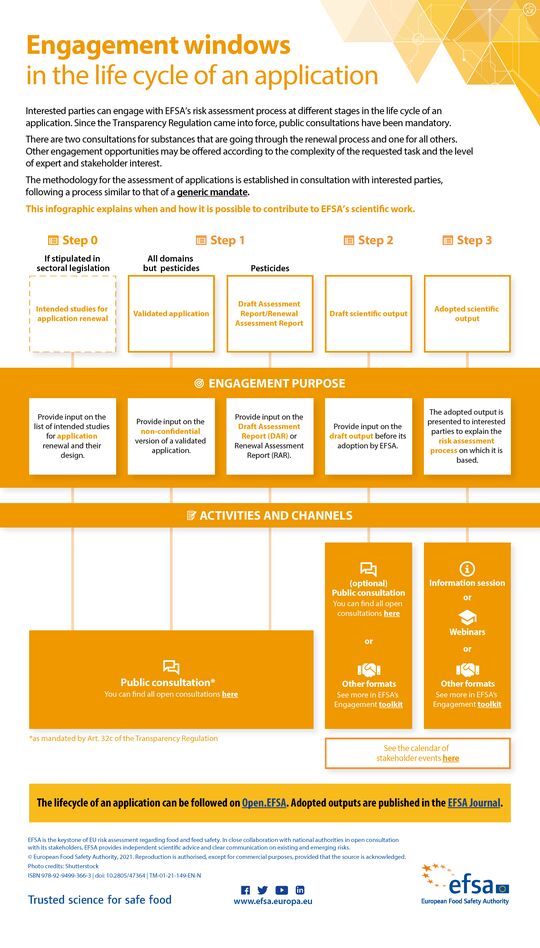Engagement windows in the life cycle of an application


Interested parties can engage with EFSA’s risk assessment process at different stages in the life cycle of an application. Since the Transparency Regulation came into force, public consultations have been mandatory. There are two consultations for substances that are going through the renewal process and one for all others. Other engagement opportunities may be offered according to the complexity of the requested task and the level of expert and stakeholder interest. The methodology for the assessment of applications is established in consultation with interested parties, following a process similar to that of a generic mandate.
This infographic explains when and how it is possible to contribute to EFSA’s scientific work.
| Step 0 | Step 1 | Step 2 | Step 3 | |
|---|---|---|---|---|
| If stipulated in sectoral legistration | All domains but pesticides | Pesticides | ||
| Intended studies for application renewal | Validated application | Draft Assessment Report/Renewal Assessment Report | Draft scientific output | Adopted scientific output |
| Engagement purpose | ||||
| Provide input on the list of intended studies for application renewal and their design | Provide input on the non-condential version of a validated application | Provide input on the Draft Assessment Report (DAR) or Renewal Assessment Report (RAR) | Provide input on the draft output before its adoption by EFSA. | The adopted output is presented to interested parties to explain the risk assessment process on which it is based |
| Activities and channels | ||||
| Public consultation*, you can find all open consultations here | (optional) Public consultation, you can find all open consultations here or Other formats See more in EFSA's Engagement toolkit | Information session or Webinars or Other formats See more in EFSA's Engagement toolkit | ||
| See the calendar of stakeholder events here | ||||
*as mandated by Art. 32c of the Transparency Regulation
The lifecycle of a mandate can be followed on Open.EFSA. Adopted outputs are published in the EFSA Journal.